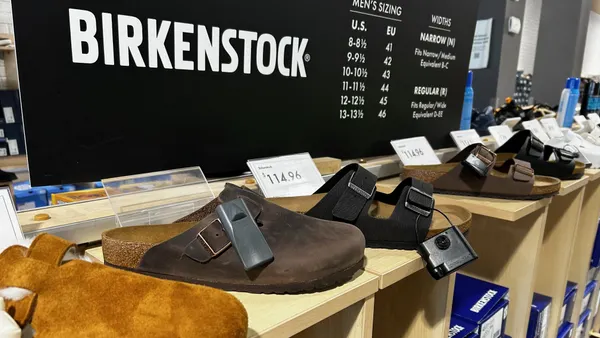Dive Brief:
-
Wayfair on Thursday reported that its fourth quarter net revenues rose nearly 45% year over year to $3.7 billion.
-
The home retailer posted a net profit in the quarter of $23.8 million, up from a loss of $330.2 million last year, according to a company press release. The number of active customers grew 53.7% year over year to 31.2 million.
-
For the full year, Wayfair's revenue grew 55% to $14.1 billion. Its net profit reached nearly $185 million, compared to a net loss of $984.6 million in the year-ago period.
Dive Insight:
Operating online and in a category that experienced heightened demand over the past year, Wayfair has emerged as one of the few beneficiaries of the pandemic.
As many consumers' homes turned into their school, work and recreational spaces, many began to invest more into them — something Wayfair benefited from directly.
"Online shopping behavior is becoming increasingly entrenched and consumer demand for the home category remains strong," CEO Niraj Shah said in a statement. "As we look beyond the pandemic period, we are confident that our long-term orientation and years of investments should translate to compounding share gains and increasing profitability in a rapidly growing e-commerce market."
The retailer has grown its customer base, but it also increased its advertising spend in the quarter by 20.5% to $374.6 million, representing just over 10% of total net revenue. While customer acquisition costs have hampered Wayfair's prospects of turning a profit, the unique circumstances brought on by the pandemic this past year have buoyed the retailer — and allowed it to reach profitability for the first time since going public in 2014.
But profitability as a result of pandemic-induced trends may not be sustainable as consumers eventually venture outside their homes and begin to invest in other things, according to GlobalData Managing Director Neil Saunders.
Consumers "will not remodel to the same extent as they did in 2020. And, as the economy reopens, they will prioritize spending on other things such as travel, probably to the detriment of home," Saunders said in emailed comments. "It is debatable as to when the music will stop, but that the tune will fade is inevitable."
As more digitally native companies begin to trade publicly, it's become increasingly clear how difficult it is to turn a profit selling goods almost exclusively online. Both pet retailer Chewy and mattress brand Casper have yet to turn a profit since their public debuts in 2019 and 2020, respectively. To help offset the high advertising and marketing costs associated with acquiring customers online, many have turned to brick and mortar — either by opening their own physical stores or by forming partnerships with traditional retailers.
Wayfair opened its first store in the summer of 2019 in Natick, Massachusetts. However, the retailer last month closed that store, which was a small-format concept, after about 18 months, Wayfair's CFO Michael Fleisher said on a call with analysts. Wayfair is now left with just one outlet-style store in Florence, Kentucky.
"We believe that home has a long future runway for online penetration, but also see value of our customers interacting with our brands and products through other channels," Fleisher said. "What the format of our physical locations will look like, however, remains to be seen and will likely vary as we think about our different portfolio brands and widespread geographic presence."














